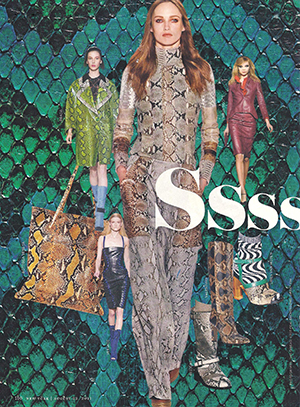
If you've got an interest in leather tanning, we'd like to let you know some details about our python skin tanning process. Tanning is the process of turning an animal skin (natural, able to decompose, and susceptible to bacteria) into a leather. The process for python skin is as follows:
- Dry salting as a preservative measure
- Beamhouse operations:
- Soaking to clean the skins
- Liming to descale them
- Deliming to raise the acidity
- Pickling to remove bone matter
- Chrome tanning to convert the material into inorganic material
- Bleaching to bleach out the natural pattern (where needed)
- Re-tanning to re-soften the leather for working
- Drying (either by hang-drying or by toggling)
- Coloring
- Shaving to prepare the leather for the product
- Applying the finishing touches
The Beginning Steps
When the python skin arrives from suppliers, it is stiff and extremely sensitive to their surroundings (air, moisture, bacteria, etc.). The skins come in salted to remove the water and to preserve them. The first step for us is restoring the water and removing the salt, which is called beaming.
The Tanning Process
Next, we move onto liming which removes scales, nails, mucins, natural greases and fats. It also splits the fibers and makes the collagen in the skin workable. Next, we delime the python skin to raise the acidity after the liming lowers it. The next phase is the pickling which is an acid bath that helps break down the bones and calcium in the python skin so that it is more pliable. After the pickling process comes the chrome bath which makes the skin durable and no longer susceptible to the elements. Once this is done, it is no longer an organic skin; it has become inorganic leather.
Finishing Touches
After the tanning is complete, we decide which skins to leave with natural markings and which skins to bleach. Then, we re-tan the python skins using vegetable-based products. All the skins (bleached and unbleached) are done in the same vat. The chrome tanning results in a boardy python skin, so the retanning serves the purpose of making the skins more like the soft leather you are used to.
Once the retanning is done, we either "toggle" (which uses an oven to dry the skins) or hang dry the skins. After that, we dye the skins into colors and shave them to the required weights and thicknesses. Finally, we season and coat them to provide an additional layer of protection and achieve the desired look and feel.
At this point, the skins are ready to ship! The manufacturers take it from here to produce the products that you're all familiar with, such as shoes, handbags, wallets and other items.



